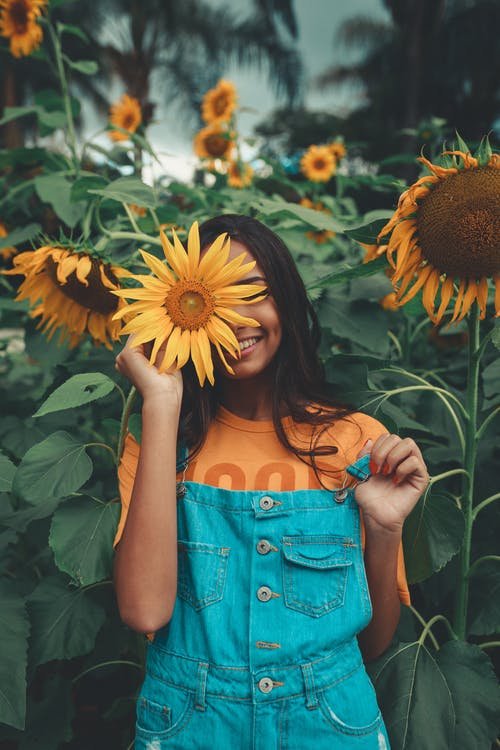I would like to grow a sunflower. It is a beautiful flower that grows in the garden. It has big leaves with lots of yellow petals that look like the sun! When it gets hot outside, they will get really tall and stretch up towards the sky. Then when the sun goes down at night, the flowers will close up so they don't get burned by the sun. The next morning, the flowers open again and let the sun shine through them. They are very pretty.

When I was little, I used to help my mom plant these seeds every year. We always planted them in rows in the garden. The seedlings were tiny, but they grew fast. By the end of summer, we had a whole field of sunflowers stretching across our backyard. There were hundreds of flowers, all different sizes and colors. They looked like giant yellow rainbows. In the evening, my dad would go out into the garden and start cutting off the heads of the sunflowers. He would cut off the top part first, then he would take a long knife and cut the stem just below where the head started. After that, he would use his hands to separate each individual flower from the rest of the plant. Finally, he would put the stems into buckets filled with water and shake them around until all the petals fell off. Once he had done this, he would carefully pick each flower up one by one and put them on a table. He would place them upside-down over a bowl so the petals could dry out. My mom would take the dried flowers and make beautiful bouquets out of them. She made sure she saved some for us to have too.
We always enjoyed eating sunflower seeds after that. They were crunchy and salty. You can eat them plain or you can roast them in the oven and sprinkle salt on them. Either way, they taste great. If you want to try making your own sunflower seeds, you should follow these steps: First, you need to remove the hulls from the sunflower seeds. This is easy if you pour boiling water over them and let them soak for a few minutes. Then, rinse the seeds under cold water. Next, spread the seeds onto a cookie sheet and bake them at 350 degrees Fahrenheit for 30 minutes. Once they are done baking, let them cool completely before storing them in an airtight container.

My favorite thing about sunflowers is how they smell! They give off a wonderful scent that reminds me of fresh-cut grass. Whenever I walk past a field of sunflowers, I always stop to inhale their sweet fragrance. The smell is so refreshing and makes me feel happy inside.
Sunflowers remind me of summer. They are everywhere during the warmer months. They are bright and cheerful, and they always make me smile. Their yellow color represents hope and optimism. Even though they are such simple plants, they are full of life and beauty. I love looking at sunflowers because they are so happy and sunny.
It's not often that a single plant can be both so useful and so beautiful. But sunflowers do just that. These tall, yellow beauties produce oil that we use to cook with, and their seeds are a tasty snack.
But there's more to sunflowers than meets the eye. In fact, these amazing plants have many fascinating facts about them. For example, did you know that sunflowers have been around for over 150 million years? And, they're still going strong today.
Another fun fact about sunflowers is that they are actually a type of daisy. Daisies are also called "true" flowers, as they come from the same family as roses, peonies, and daffodils.
Finally, sunflowers are incredibly hardy. They can grow in almost any climate, including deserts and places that receive heavy snowfall. In fact, they can even thrive in areas that experience drought.
Now that you've learned a bit more about these wonderful flowers, why not try growing your own? Here are some tips.
First, make sure that you choose a spot that receives plenty of sunlight. Sunflowers need at least six hours of direct light per day. If you live somewhere that doesn't get much sunshine, you might want to consider using artificial lights to help them grow.
Next, you'll need to prepare the soil. Make sure it drains well and is rich in nutrients. You may want to add compost, manure, or fertilizer to your planting area.
After that, you can begin planting your seeds. You should plant two to three times as many seeds as you plan to harvest.
Once your seeds sprout, you can transplant them into larger pots. Be careful not to disturb the roots while doing this.
Keep the soil moist, but be careful, don't overwater. It's also important to avoid extreme temperatures.
Finally, when your sunflowers reach about eight inches high, you can transplant them to your garden. Just make sure that the weather is warm enough for them to survive.

That's all there is to it! Now, you can enjoy the fruits (and seeds) of your labor. Happy gardening! I invite @keato to the community! Bye!

